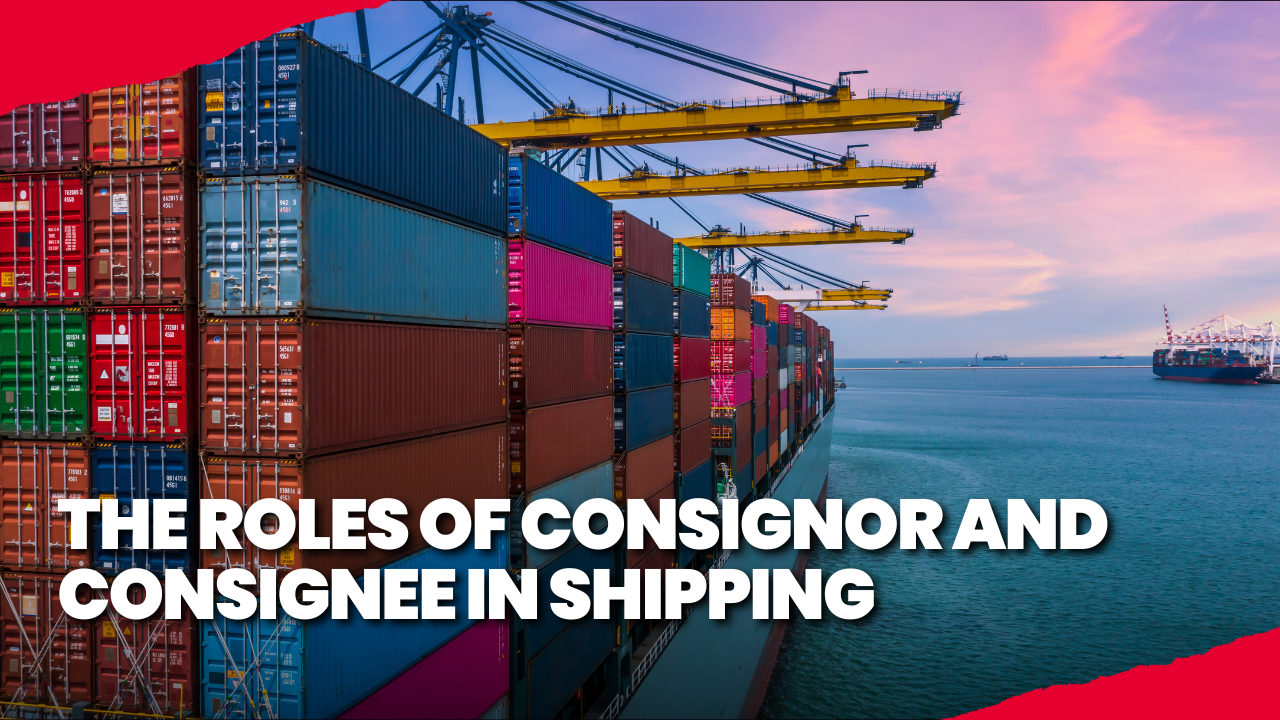
Shipping and logistics professionals depend on the phrases consignor and consignee for the efficient transfer of products from one location to another. People in the e-commerce, foreign trade, retail, and manufacturing businesses use these terms a lot in their supply chains.
Knowing the Consignor vs Consignee not only speeds up the shipping process but also makes sure that everyone is responsible, lowers the risk of disputes, and makes it easier to follow customs rules. It is the consignor’s job to send the things, and it is the consignee’s job to receive them. Understanding the consignee meaning as the party responsible for receiving the shipment is important in maintaining proper documentation and legal clarity, especially in international trade.
If you own a business that ships goods across countries or a local eCommerce site that delivers items to customers on a regular basis, you need to know who the consignor and consignee are in every transaction. If you don’t, you could end up with confusion, delays, and financial losses. Having these responsibilities is necessary for maintaining updates on shipments and knowing who is responsible for what at each step of the it.
What is a consignor?
The consignor is the person or business that starts the shipping process. This person or thing could be a seller, provider, or maker that sends goods to someone else. Most of the time, the person sending the goods keeps ownership of them until they are brought and accepted by the person receiving them.
Important Things a Consignor Must Do:
- Sorting and packing products for transport.
- Make sure that all the paperwork is correct, like receipts and shipping labels.
- Choosing a freight forwarder or service you can trust.
- Getting foreign packages ready by working with customs.
What is a consignee?
The person who gets the things that the seller ships is called the consignee. This person could be a buyer, a store, or an agent whose job it is to receive the things and maybe sell them. Depending on what was decided upon, the consignee owns the things as soon as they are delivered.
Important Things a Consignee Must Do:
- Getting the things and checking them out when they arrive.
- Managing customs clearance and related responsibilities.
- In charge of the collection and, if needed, more delivery.
- As agreed upon with the seller, making payment.
Additional Shipping Roles with Freight Forwarders and Notify Parties
The efficient transfer of goods across international borders depends on more than just the consignor and consignee. A freight forwarder knows a lot about activities and handles the shipping process for the sender or receiver. They book shipments, make sure information is in order, clear customs, and work with companies to make the whole process go smoothly.
The notify party is the person or group that needs to be told when the shipment arrives. While the consignee is the main receiver, the notify party helps coordinate delivery, customs clearance, and further handling, especially useful in complex supply chains involving multiple stakeholders.
Knowing about these extra jobs makes the whole shipping process clearer and easier to coordinate, which lowers the chances of delays and risks during transport.
Also Read This: How to Import Goods from China to India: Complete Guide for 2025
Consignor vs Consignee: A Comparative Overview
| Aspect | Consignor | Consignee |
| Role in Transaction | Sender of goods | Receiver of goods |
| Ownership | Retains ownership until delivery | Gains ownership upon receipt |
| Responsibilities | Prepares shipment, documentation | Receives goods, handles customs, payment |
| Legal Standing | Initiator of shipment | Final recipient, responsible for acceptance |
How important is it in the supply chain?
It is important to know the difference between consignor and consignee for different reasons.
- Transport and delivery go smoothly because of efficient logistics and well-defined responsibilities.
- Accurately defines ownership and liabilities at every level for legal clarity.
- Negotiates payment terms and duties for financial transactions.
Wrapping It Up
Any shipping or logistics operation must distinguish between the consignor vs consignee. The seller starts the shipping process, and the recipient is in charge of getting the goods. Making these jobs clear helps keep delays, legal problems, and money disagreements at bay.
Knowing the correct consignee meaning supports better coordination in both domestic and international trade. It makes sure that everyone knows what they need to do at every step. When you use these terms correctly, deals go more smoothly and trust grows throughout the supply chain. This is true whether you’re in manufacturing, retail, or e-commerce.
FAQs
Yes, the consignor and consignee can be in the same business, but in different places. This is particularly valid for internal company moves.
Yes, responsibility depends on what was agreed upon. Usually, the consignor is responsible until the things are delivered, at which point the buyer takes over.
Not always. A dealer or store owner could be the consignee. This person then sells the things to the final user.
Also Checkout Our YouTube Channel: @limeinstituteofexportimport






